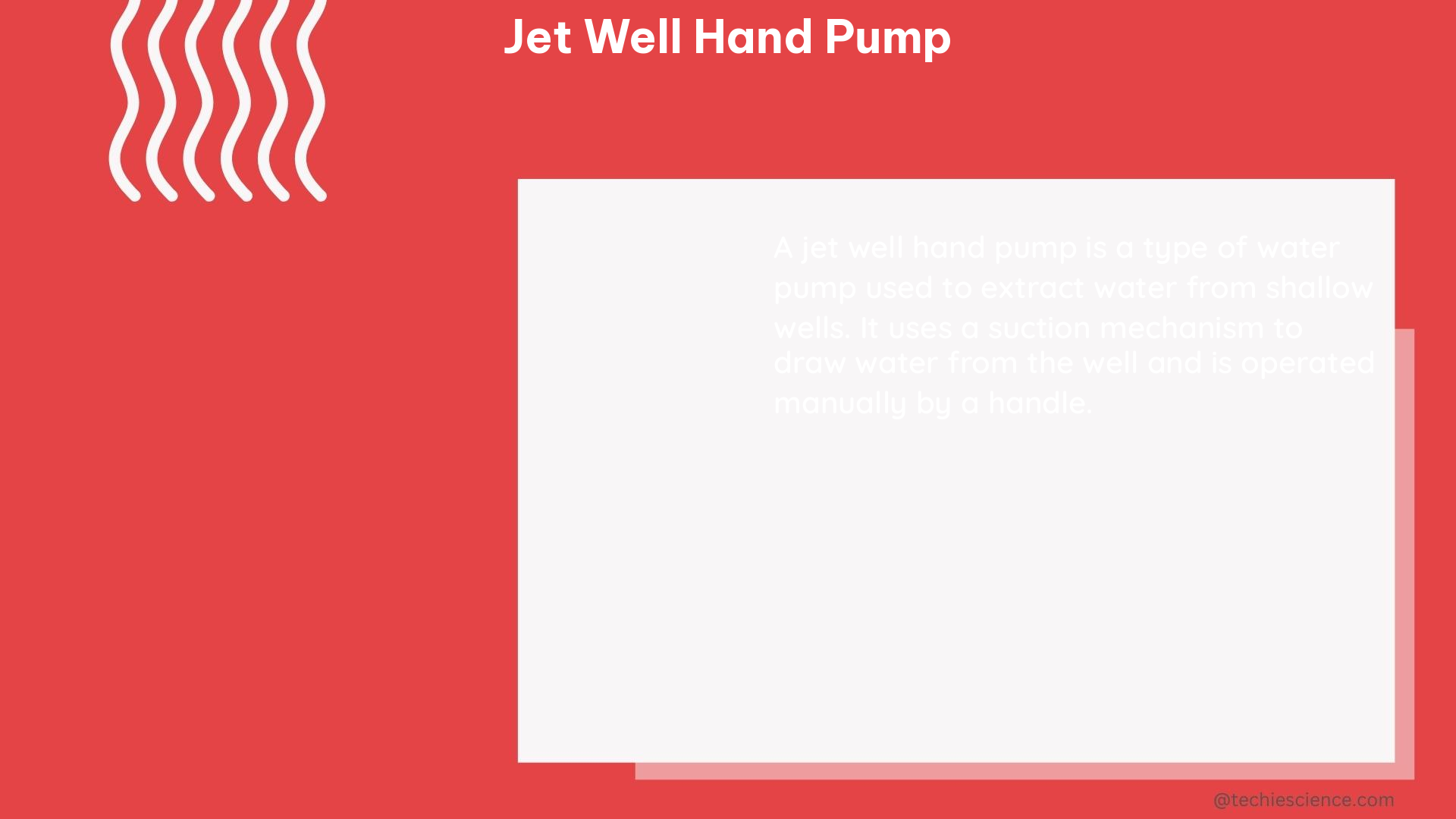Jet well hand pumps are a reliable and efficient way to lift water from shallow wells, utilizing the Venturi effect to create a low-pressure area that sucks water into the pump. These pumps consist of a nozzle, a venturi, and a diffuser, with the nozzle accelerating the water flow to create a high-velocity jet that mixes with the suction water in the venturi, and the diffuser slowing down the jet to convert its kinetic energy into pressure.
Understanding the Venturi Effect in Jet Pumps
The Venturi effect is the fundamental principle behind the operation of jet pumps. When a fluid, such as water, flows through a constriction (the nozzle), its velocity increases, and its pressure decreases. This low-pressure area created by the nozzle is then used to draw in the suction water, which is then mixed with the high-velocity jet and accelerated through the diffuser, where the kinetic energy is converted back into pressure.
Factors Affecting Jet Pump Performance

The performance of jet pumps is influenced by several factors, including:
- Pressure and Flow Rate of the Jet: The higher the pressure and flow rate of the jet, the greater the suction force and the higher the lift capacity of the pump.
- Diameter and Length of the Suction Pipe: The diameter and length of the suction pipe can affect the flow resistance and the amount of water that can be drawn into the pump.
- Depth and Diameter of the Well: The depth and diameter of the well can impact the available water supply and the pump’s ability to lift the water.
According to a study published in ResearchGate, the overall efficiency of jet pumps is strongly determined by the energy exchange between the jet and the secondary flow, with the optimal performance occurring when the jet and secondary flow are well-matched.
Technical Specifications of Jet Well Hand Pumps
The technical specifications of jet well hand pumps can vary depending on the model and manufacturer. Here are some example specifications for the Simple Pump jet pump:
| Specification | Value |
|---|---|
| Maximum Lift | 25 feet |
| Maximum Flow Rate | 5 gallons per minute |
| Maximum Pressure | 60 psi |
| Minimum Water Depth in Well | 10 feet |
| Suction Pipe Diameter | 1 inch |
It’s important to note that these specifications may differ for other jet well hand pump models, and it’s crucial to carefully review the manufacturer’s recommendations to ensure the pump is suitable for your specific well and water requirements.
DIY Installation of Jet Well Hand Pumps
Installing a jet well hand pump can be a DIY project, but it requires some knowledge and skills in plumbing and well drilling. The pump consists of several components, including the pump body, the piston, the cylinder, the check valves, and the lever arm. The installation process involves:
- Setting the pump at the correct depth in the well, ensuring it is properly aligned and secured.
- Connecting the suction and discharge pipes, making sure they are properly sealed and free of leaks.
- Adjusting the pump stroke to optimize the water flow and lift.
It’s important to follow the manufacturer’s instructions carefully and to ensure that all components are properly installed and functioning correctly to ensure the safe and efficient operation of the jet well hand pump.
Conclusion
Jet well hand pumps are a reliable and efficient way to lift water from shallow wells, utilizing the Venturi effect to create a low-pressure area that sucks water into the pump. With their technical specifications and installation requirements, these pumps can be a great DIY project for homeowners and small-scale farmers looking to establish a sustainable water supply. By understanding the factors that affect their performance and following the proper installation procedures, you can ensure that your jet well hand pump provides a reliable and long-lasting water source for your needs.
References:
- Experimental investigation of the performance of liquid-gas jet pumps with inlet swirling
- USGS Water Supply Paper 2282: Ground Water and Wells
- Experimental and numerical investigation of the performance of a jet pump with a swirling primary flow
- Air Force Handbook 60-101: Water Supply and Wastewater Treatment
- Can I use the same shallow well cap for both a jet pump and a submersible pump?
- Simple Pump Jet Pump

The lambdageeks.com Core SME Team is a group of experienced subject matter experts from diverse scientific and technical fields including Physics, Chemistry, Technology,Electronics & Electrical Engineering, Automotive, Mechanical Engineering. Our team collaborates to create high-quality, well-researched articles on a wide range of science and technology topics for the lambdageeks.com website.
All Our Senior SME are having more than 7 Years of experience in the respective fields . They are either Working Industry Professionals or assocaited With different Universities. Refer Our Authors Page to get to know About our Core SMEs.